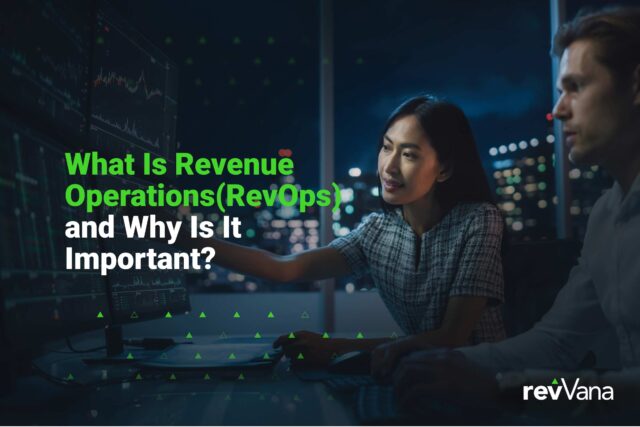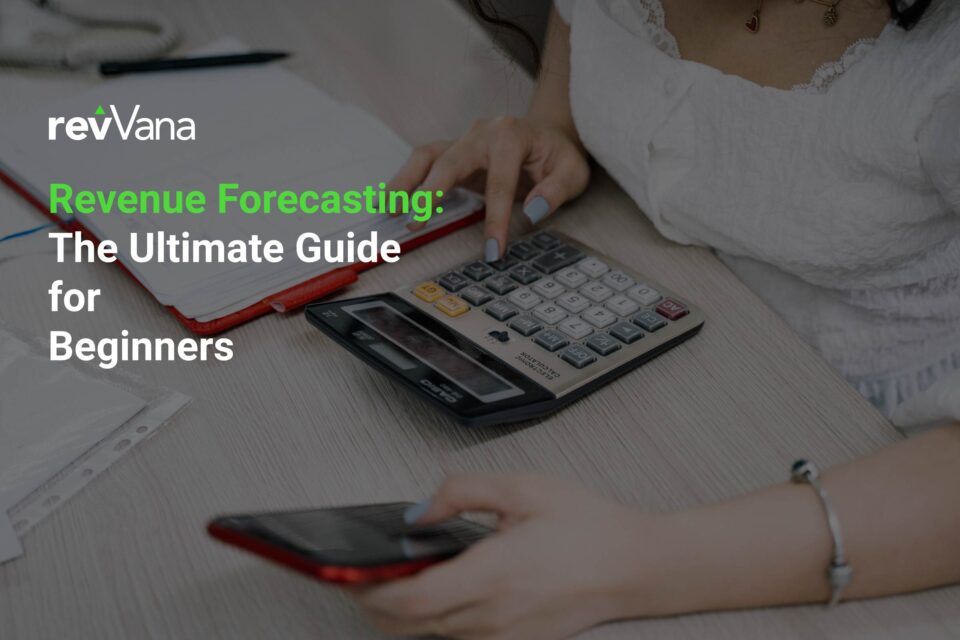

What Is Revenue Operations (RevOps) and Why Is It Important?
Learn about Revenue Operations (RevOps) as a strategy to align siloed revenue teams within B2B and B2C companies and unify revenue goals and targets.

Published on Friday, February 15, 2019
Good decision-making, planning, and management of finances all rest on the back of accurate revenue forecasting, with many businesses knowing that the benefits of revenue forecasting are too good to pass up. And, in the current – tumultuous – economic climate caused by the ongoing pandemic, having the ability to properly plan and manage finances has never been more important.
The fact is that revenue forecasting is an essential skill for business owners, leaders, and managers to have. Yet, many either misunderstand, don’t understand at all, or have a variety of uncertainties about the practice. But not to worry, we will clear it all up for you in this article. Dive into revenue forecasting: the ultimate guide for beginners, and have all your questions answered.
A revenue forecast is an estimate of the expected revenue over a fixed time period, usually for each quarter or each fiscal year. The estimate is made using several factors or data points, including previous financial performance or historical data, sales pipelines, and market sentiment.
In other words, a revenue forecast is an educated prediction of the money your organization will bring in, in the upcoming year or quarter. It is used to ascertain how much money your company can spend, what your margins will be, and to make decisions about hires and production, for example. The accuracy of a revenue forecast is imperative. If it is inaccurate, you’ll be making business decisions based on incorrect predictions.
A common misconception that should be avoided at all costs is that revenue forecasting and sales forecasting are the same thing and are used for the same thing. They are not.
What would ‘Revenue Forecasting: The Ultimate Guide for Beginners’ be without a section convincing you that revenue forecasting is worth it? We know that revenue forecasting can be a lot of effort and that it can be fairly costly at times. Gathering the correct data and resources is expensive, of course. However, it does pay off in the end. Here are some benefits of revenue forecasting:
Next in this revenue forecasting: the ultimate guide for beginners, we’ll give you a quick rundown of how it works. Essentially, there are two models of revenue forecasting. For the best forecast, you should use both.

First, there is the method of judgment forecasting. Using this approach, you estimate growth based on your experience and intuition. This method focuses more on subjective information. Remember that this method may be a bit difficult to do if you lack experience or are new to the business sphere.
Then there is quantitative forecasting. Here you take facts and figures into account. This process is data-oriented and focuses on objective information. For example, your current pipeline and sales figures, historical records, profit margins, and growth and loss projections all should be factored into the revenue forecast formulation. Additionally, market conditions should be considered.
Once you decide that it’s time to do a revenue forecast, you may not be sure where to start. We’ve got you covered. Here are some steps to follow.
Consider the expense that a revenue forecast will be. Are you able to afford to do it quarterly or is annually more realistic for your organization? You should also think about sales cycles. How long do they last in your organization? By asking questions like this, you can decide how often to do a forecast.
Think about whether you want to use judgment forecasting, quantitative forecasting, or both. Remember that using both can result in a more accurate forecast.
It will be important to use either a historical basis for retention or renewal to measure customer churn and also factor in any known customer commitment end dates.
Forecasting your sales is an important part of the process, but it tends to scare people away because it can be difficult to do. Basically, you have to look at data and make estimations based on that information. Have a look at our articles on examples of sales forecasting and methods of sales forecasting to learn more. Remember to consider recent changes in products and pricing here.
Think about whether you have new competitors or whether you have lost customers to market conditions. This will help you with the intuitive or subjective part of revenue forecasting.
Keep in mind that the previous year’s revenue statements can help you forecast future revenue. Historical data is very important in this type of forecasting.
Finally, you calculate your expected revenue. After you do this, it may be useful to separate your various sources of income, as this will give you a better understanding of where you may experience ups and downs in each stream.
Revenue Forecasting: The Ultimate Guide for Beginners would be incomplete if we didn’t mention that you must continuously review your forecast and ensure that you update it to show changes in your organization.

You’d be surprised how often mistakes happen. To ensure that your forecast is as good as it can be, we want to give you some insight into common blunders that are made. This way, you can avoid them as much as possible.
After reading Revenue Forecasting: The Ultimate Guide for Beginners, we hope that the entire process has become clearer and less daunting to you. By implementing this type of revenue forecasting, you can take your business from strength to strength. So, now that you understand it, you should get started! And, don’t hesitate to contact revVana, for all your revenue forecasting needs.